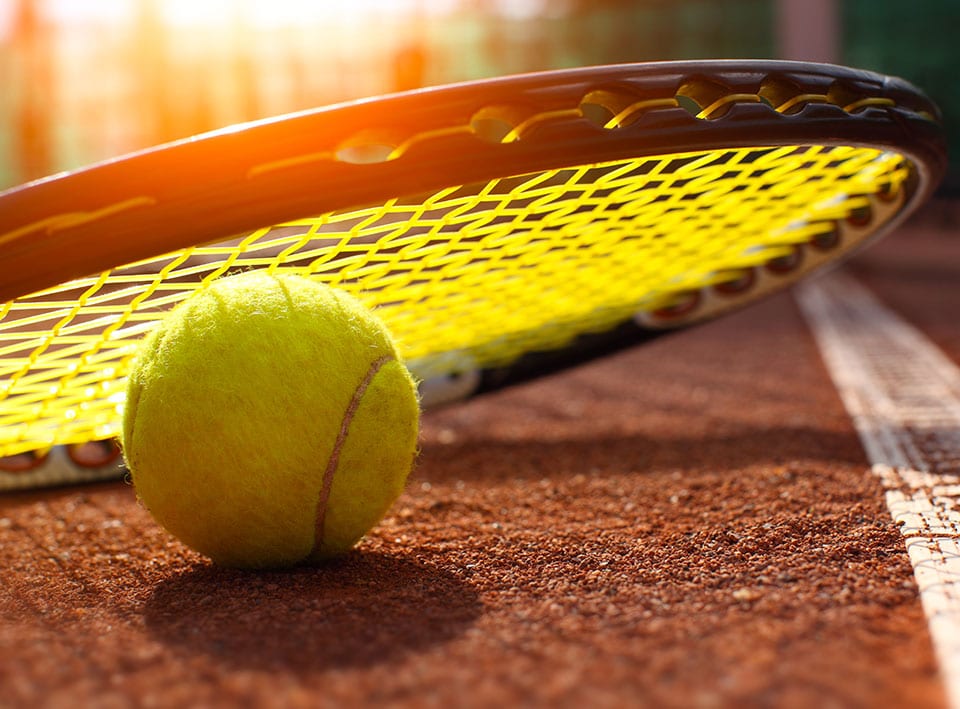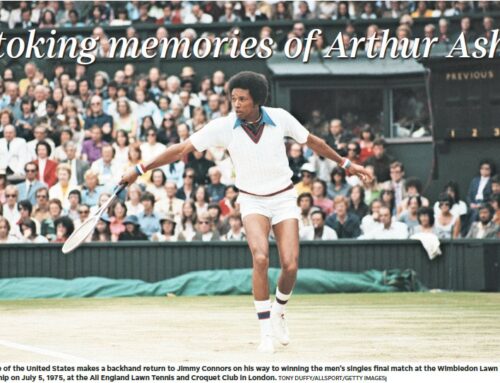Serena Williams stepped back from the firestorm she created during her loss to Kim Clijsters in the U.S. Open semifinal last weekend and apologized for her outburst against the linesperson whose foot-fault call compelled the three-time champion to lose her cool.
Now it’s time for the governing bodies of tennis to apologize to the sports public for fostering a system that gives a peripheral official the power to decide who wears the game’s most prestigious crowns, and to examine whether racial bias was a factor. In the Williams-Clijsters match the linesperson’s decision to call a foot-fault at a critical moment resulted in a penalty point against Williams that gave Clijsters the victory. Immediately after seeing television replays, former pro and CBS analyst John McEnroe, no choirboy during his playing days, questioned the linesperson’s decision to call a foot-fault.
What should be a scary reality for the tennis world is that at match-point of any major championship final a service line person, not the chair umpire, can make a second-serve, foot-fault call that would decide who gets the $1 million plus title.
In no other sport is this the case. NBA referees rarely call hand-check fouls and NFL officials rarely cite players for incidental contact during crunch time for the same reason: the emphasis, rightfully, is on allowing athletes, not officials, to decide who wins or loses. In tennis, players can lose career changing matches and million-dollar purses at the whim of a service line person. The sport needs to do more to protect the integrity of the game. Today’s players have Williams to thank for a recently-installed instant replay system that allows them to challenge some calls through the chair umpire. However, foot-faults are not challengeable.
Indeed the tennis world’s instant replay was installed at major tennis championships because of a chair umpire’s -let’s say incompetence and/or unprofessionalism – during a 2004 U.S. Open quarterfinal between Williams and Jennifer Capriati. During that match, which was won by Capriati, chair umpire Mariana Aves of Portugal, made four blatantly bad calls against Williams, who at the time remained serene and acted professionally, despite the circumstances.
In a commentary written after the match NBC’s Tracy Austin wrote, “I thought it was incredible how Serena kept her composure in the final set. While you could tell she was upset, she behaved very well considering the significance of the moment. After the match Serena said she thought the umpire was temporarily insane. I think the umpire was temporarily blind if she couldn’t see the mistakes she was making on those calls.”
But Williams reached her snapping point after the linesperson’s call Saturday. She reacted emotionally but normally when pushed to the brink. Some might have wondered why Serena and her sister, Venus, top pros for more than 12 years, were cited more than a half dozen times for rarely called foot-fault violations at his year’s U.S. Open. Did U.S. Open linespersons give other top pros playing on Arthur Ashe Stadium comparable attention/penalties? Not by a long shot. Over the course of my career as a tennis journalist I’ve covered tens of thousands of matches and can say without a doubt that foot-faults occasionally occur during most tournaments but rarely are called, especially against top pros.
Understanding the history might help explain why Serena, who had shown calm under fire in other provocative moments during her career, lost it this time. That’s the part of the story that many in the media have ignored. Consider the jeering of the Williams family 10 years ago at Indian Wells, CA. during another Clijsters vs Serena final. For nearly two hours fans booed Serena mercilessly during the match, but she never reacted. Against Capriati five years ago, Serena again showed remarkable restraint in a match that she, and most people watching, knew she should have won. A chair umpire decided that outcome and last Saturday a linesperson’s call shut the door on Serena’s bid for a fourth U.S. Open crown.
Those who know the history of race relations in this country prefer to believe that the cruelty, insensitivity and unfairness that once prevailed no longer exist. Conditions surely are not what they used to be, but there are signs race relations in these United State are moving in the wrong direction.
We still see flashes of hatefulness in the words and eyes of those who want so desperately for Barack Obama, our first African American president, to fail. Conservative pundits stoke the flames daily. A Congressman calls the President a liar as he addresses a joint session of Congress. Fellow Americans call for his death at town hall meetings. Still, the President calls for bipartisan support and accepts apologies from his attackers without conditions.
We see an esteemed Harvard college professor, worn out after returning from a trip abroad, arrested because he reacted verbally to being treated like a criminal in his home.
And we see Serena Williams, fighting to win a match that would have moved her a step closer to her goal of becoming this nation’s most dominant woman pro, losing her cool under the most dubious circumstances. Let us hope that tennis’ governing bodies do whatever is necessary to help the Serenas of the world satisfy their career dreams — on a level playing field. Which means they must first acknowledge that the tennis world is not a racial-bias-free zone. If some of our fellow Americans can openly and angrily admit that they don’t want a black person to be President, it shouldn’t be a stretch to realize that there might be others who don’t want a black woman to be the best tennis player in the world. Tennis, too, must continue to strive to overcome a troublesome history.
At the turn of the 20th century, W.E.B. DuBois, an African American educator, predicted that “the problem of the 20th century would be the problem of the color line.”
It is clear that the problem lingers still, as we move into the 21st century.





Leave A Comment